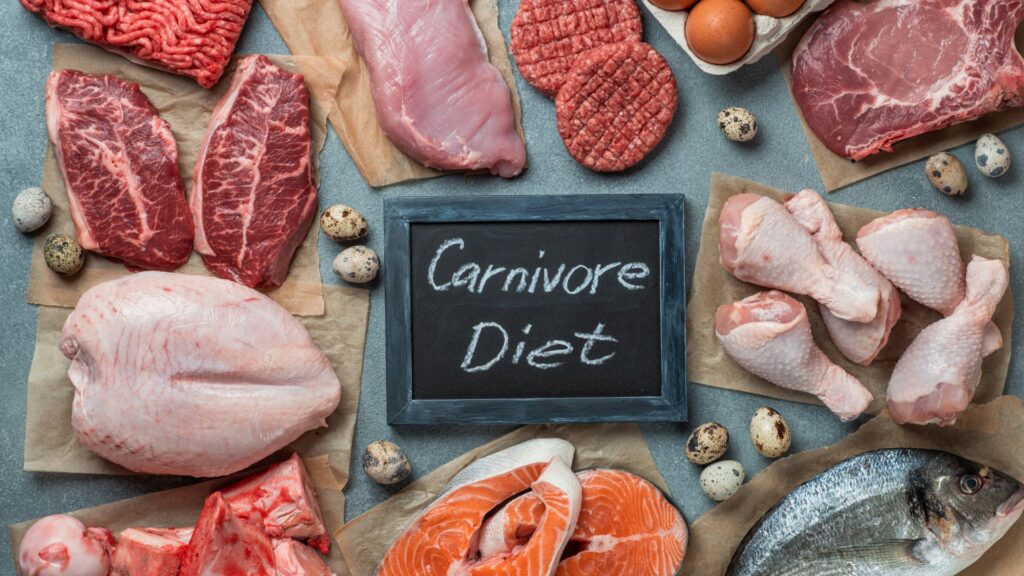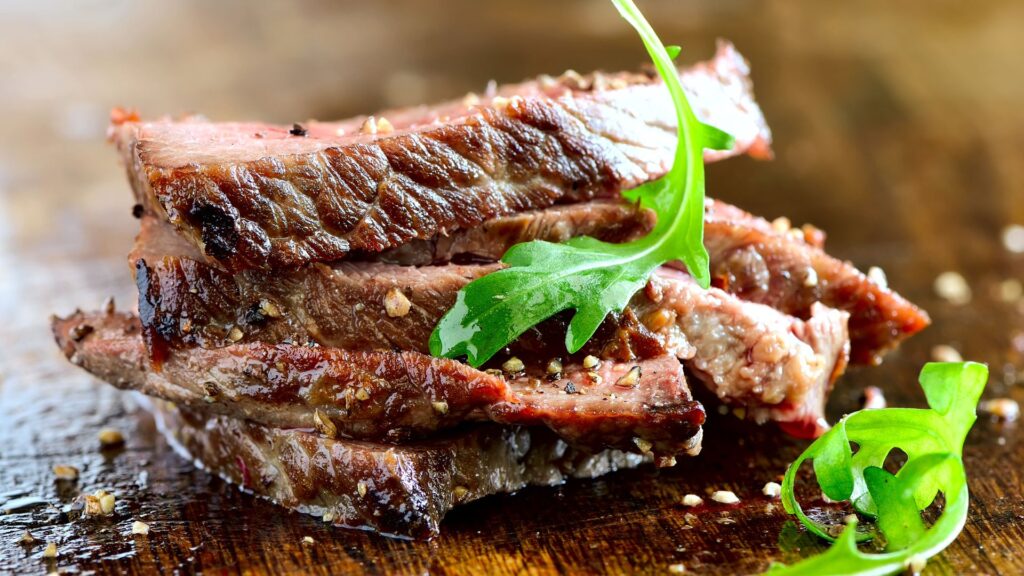Guide on the Carnivore Diet
The carnivore diet, a lifestyle choice that has gained significant popularity in recent years, focuses on consuming animal products exclusively. As an all-meat diet, it seems like a dream come true for meat lovers. This comprehensive guide will explore the key aspects of the carnivore diet, including its benefits, potential drawbacks, and meal ideas.
Table of Contents
- What is the Carnivore Diet?
- Benefits of the Carnivore Diet
- Potential Risks and Drawbacks
- How to Get Started with the Carnivore Diet
- Meal Ideas and Recipes
- How Long Does It Take to See Results on the Carnivore Diet?
Famous People Following the Carnivore Diet
| Name | Profession |
|---|---|
| Joe Rogan | Podcast host, comedian, and MMA commentator |
| Shawn Baker | Orthopedic surgeon and author |
| Mikhaila Peterson | Health blogger and podcast host |
| Jordan Peterson | Psychologist and author |
1. What is the Carnivore Diet?
A carnivore diet is an extreme form of a low-carb, high-fat diet that focuses on consuming animal products exclusively. It eliminates all plant-based foods, including vegetables, fruits, grains, and legumes. The diet’s primary goal is to improve overall health and body composition while simplifying food choices.
Foods to Eat
- Meat (beef, pork, lamb, game, poultry)
- Fish and seafood
- Eggs
- Dairy products (preferably full-fat and limited for some individuals)
- Animal fats (tallow, lard, butter, ghee)
Foods to Avoid
- Vegetables
- Fruits
- Grains
- Legumes
- Nuts and seeds
- Sugars and artificial sweeteners
- Plant-based oils
- Processed foods
This post contains affiliate links, and as an Amazon Associate, I earn from qualifying purchases that help keep this content free. (Full disclosure).
2. Benefits of the Carnivore Diet

Adherents of the carnivore diet report several health benefits, which include:
- Weight loss: The carnivore diet can promote weight loss by reducing appetite, increasing satiety, and encouraging the body to burn fat for fuel.
- Reduced inflammation: Consuming only animal products may help reduce inflammation, as it eliminates plant-based foods that can trigger inflammation in some individuals.
- Improved digestion: The carnivore diet may alleviate digestive issues by cutting out potential irritants, such as grains, legumes, and some vegetables.
- Mental clarity: Some people report enhanced mental clarity and focus when following a carnivore diet, which may be due to stable blood sugar levels and reduced inflammation.
- Simplified meal planning: The carnivore diet eliminates many food choices, making meal planning and grocery shopping more straightforward.
3. Potential Risks and Drawbacks
Despite its potential benefits, the carnivore diet also has some risks and drawbacks:
- Nutrient deficiencies: Excluding plant-based foods may lead to deficiencies in essential nutrients, such as fiber, vitamins, and minerals.
- Long-term health concerns: The long-term health effects of the carnivore diet are unknown, and concerns exist regarding the increased risk of heart disease and other health issues.
- Restrictive nature: The diet’s restrictive nature may be challenging to maintain long-term and could lead to disordered eating patterns.
- Environmental impact: Consuming large amounts of meat may have a negative environmental impact, including increased greenhouse gas emissions and resource depletion.
4. How to Get Started with the Carnivore Diet

Follow these steps to begin the carnivore diet:
- Consult a healthcare professional: Before starting any new diet, consult a healthcare professional to ensure it is appropriate for your individual needs.
- Eliminate plant-based foods: Gradually remove all plant-based foods from your diet, including vegetables, fruits, grains, and legumes.
- Prioritize nutrient-dense animal products: Choose a variety of high-quality animal products, such as grass-fed meats, wild-caught fish, and pasture-raised eggs, to maximize nutrient intake.
- Incorporate organ meats: Include organ meats, such as liver and heart, in your diet to ensure you’re getting essential nutrients that may be lacking in muscle meats.
- Monitor your health: Keep track of your energy levels, body composition, and overall well-being. Regularly consult with a healthcare professional to address any concerns or adjustments needed.
- Adapt and adjust: The carnivore diet may not be suitable for everyone. If you experience adverse effects or struggle with adherence, consider incorporating some plant-based foods back into your diet.
5. Meal Ideas and Recipes
Here are some meal ideas and recipes to help you get started with the carnivore diet:
Breakfast
- Scrambled eggs cooked in butter or ghee, topped with cheese and bacon
- Smoked salmon with cream cheese and capers
- Steak and eggs cooked in animal fat, served with a side of bone broth
Lunch
- Grilled chicken salad with hard-boiled eggs and blue cheese dressing
- Roast beef roll-ups with horseradish sauce and sliced cheese
- Seared tuna steak with a side of shrimp cocktail
Dinner
- Ribeye steak cooked in tallow, served with a side of roasted bone marrow
- Lamb chops with a creamy garlic sauce, served with a side of pan-seared scallops
- Slow cooker beef short ribs served with a side of chicken liver pâté
Snacks
- Beef jerky (made without added sugar)
- Pork rinds
- Full-fat cheese
6. How Long Does It Take to See Results on the Carnivore Diet?
Most individuals typically experience significant results on the carnivore diet within 30 days. Throughout this period, the body undergoes various changes, leading to a range of side effects:
Carnivore Diet Results Phases
Day 1-3 Results on the Carnivore Diet:
During the initial days, you may not feel as good as you anticipated due to lower blood sugar levels and your body’s inefficiency in producing and using ketones for fuel.
Day 2-5 Results on the Carnivore Diet:
At this stage, you’ll likely experience the “keto flu” with symptoms such as fatigue, dehydration, and brain fog. This is a normal part of the transition and will pass.
Day 3-7 Results on the Carnivore Diet:
Your body starts shedding excess water, which is no longer needed to metabolize carbohydrates. As a result, you may notice a drop in water weight.
Day 6-9 Results on the Carnivore Diet:
This is when you can expect some of the most significant benefits of the carnivore diet. Real fat loss begins, and you’ll start to feel better overall.
Day 7-17 Results on the Carnivore Diet:
As your body adapts to using ketones instead of carbohydrates for fuel, you’ll experience decreased hunger and increased mental clarity.
Day 8-18 Results on the Carnivore Diet:
With reduced hunger comes a shrinking waistline. You’ll observe rapid fat loss as your body relies on fat for fuel while in a calorie deficit.
Day 15 Onwards:
Your daily energy levels and focus improve as your body adjusts to its new internal environment. Your liver begins producing most of the glucose it requires each day.
Day 19-26 Results on the Carnivore Diet:
Around the three-week mark, most people notice a slight decrease in the rate of fat loss. This occurs because the body slows down its metabolism in response to a calorie deficit.
Day 30 Onwards:
By day 30, you’ll feel more in control of your diet, appetite, and cravings. You’ll be able to decide when to eat instead of your body dictating your hunger, and you’ll continue to see consistent results.
If you’re interested in learning more about the foundations of a healthy and balanced diet, I highly recommend checking out our in-depth article, “The Ultimate Guide to the Proper Human Diet.” This comprehensive guide will help you better understand the importance of nutrition and the key components of a well-rounded diet, providing you with the knowledge you need to make informed choices for your health and well-being.


